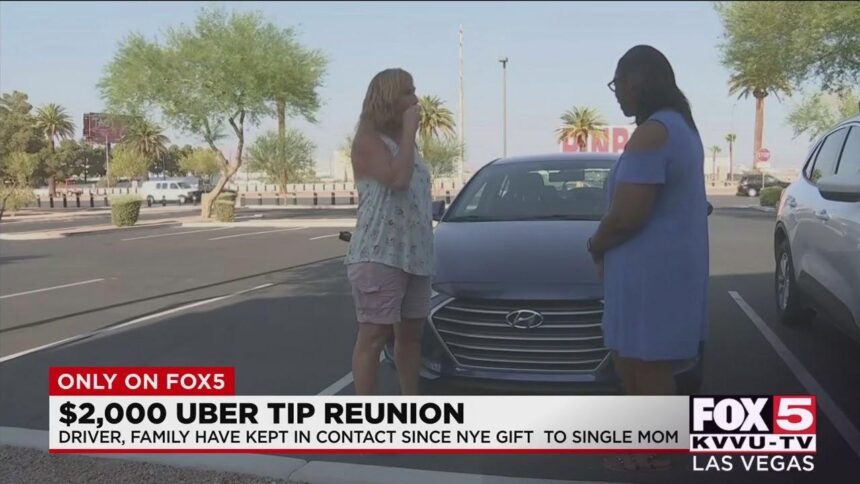Las Vegas Uber Driver Given Suspended Sentence Following Fatal Pedestrian Accident
A recent court ruling in Las Vegas has resulted in a suspended sentence for an Uber driver involved in a tragic accident that claimed the life of a pedestrian. This case has ignited widespread discussion about the responsibilities of ride-share drivers and the adequacy of current road safety measures in urban environments. As details emerge about the incident and the judicial rationale, the community is actively debating the implications for public safety and legal accountability.
Details of the Case and Sentencing Outcomes
The incident, which took place late last year, involved an Uber driver who struck and fatally injured a bystander. The driver admitted guilt to vehicular manslaughter charges. The court opted for a suspended sentence, incorporating probation and community service, alongside mandatory safety education and alcohol testing requirements. Additionally, the victim’s family was compensated through a civil settlement.
- Guilty plea entered for vehicular manslaughter
- Suspended sentence with probation lasting three years
- Completion of 200 hours of community service mandated
- Compulsory driver safety training and regular alcohol screenings
- Restitution payment of $150,000 awarded to the victim’s family
| Sentencing Component | Details |
|---|---|
| Probation Duration | 3 years |
| Community Service Hours | 200 hours |
| Safety Training | Mandatory for all ride-share drivers |
| Restitution Amount | $150,000 |
Calls for Tougher Legal Measures and Enhanced Accountability
Legal professionals and safety advocates have expressed concern that the lenient sentencing may not sufficiently reflect the gravity of causing a fatality through negligent driving. Critics argue that such outcomes risk diminishing public confidence in the justice system’s ability to hold ride-share drivers accountable.They emphasize the urgent need for legislative reforms to impose stricter penalties and close existing legal loopholes.
Among the proposed reforms are:
- Implementation of mandatory minimum prison sentences for commercial drivers involved in fatal crashes
- Stricter and ongoing background checks for ride-share drivers
- Legislative amendments to eliminate gaps that reduce corporate and driver liability
- Heightened penalties for violations compromising pedestrian safety
| Reform Proposal | Expected Impact |
|---|---|
| Mandatory Minimum Sentences | Ensure consistent and important consequences |
| Enhanced Driver Screening | Reduce risk by filtering unfit drivers |
| Closing Legal Loopholes | Increase corporate and driver responsibility |
| Stricter Pedestrian Safety Enforcement | Better protection for pedestrians |
Examining Safety Protocols and Regulatory Shortcomings in Ride-Share Operations
The fatal accident has intensified scrutiny on the regulatory environment governing ride-share companies. Critics highlight that current safety protocols are often fragmented and insufficiently enforced,perhaps endangering both passengers and pedestrians. Key issues include outdated or minimal background checks, inconsistent vehicle inspections, and a reactive approach to incident management rather than proactive prevention.
Primary regulatory challenges include:
- Disjointed oversight among municipal, state, and federal authorities leading to enforcement gaps
- Absence of mandatory real-time monitoring technologies in ride-share vehicles
- Limited corporate accountability for driver misconduct or negligence
| Issue | Current Practice | Recommended Enhancement |
|---|---|---|
| Driver Background Checks | Basic and infrequent | Comprehensive annual re-evaluations |
| Vehicle Safety Inspections | Irregular and inconsistent | Mandatory quarterly inspections |
| Incident Accountability | Handled on a case-by-case basis | Standardized liability policies for companies |
Strategies for Improving Driver Training and Enhancing Public Safety
With the rapid expansion of ride-sharing services in metropolitan areas, elevating driver training programs is essential to protect both riders and pedestrians. Training should focus on advanced hazard recognition, emergency response techniques, and strict compliance with traffic laws under varying conditions. Innovative methods such as virtual reality simulations and scenario-based drills can better equip drivers to handle unpredictable situations, reducing the likelihood of accidents caused by distraction or insufficient skills.
In addition to driver education, collaboration between local authorities and ride-share companies is crucial to develop comprehensive safety policies.Recommended measures include:
- More rigorous background and psychological assessments to ensure driver suitability
- Installation of in-car monitoring systems that provide real-time feedback and record driving behaviour
- Public awareness campaigns aimed at increasing pedestrian vigilance in high-traffic areas
- Strict enforcement of speed limits and establishment of designated pick-up/drop-off zones to improve traffic flow and safety
| Policy Focus | Target Audience | Anticipated Benefit |
|---|---|---|
| Enhanced Driver Training | Active Ride-Share Drivers | Lower accident rates and improved road safety |
| Community Safety Campaigns | Local Pedestrians and Residents | Heightened awareness and safer pedestrian behavior |
| Policy Enforcement and Monitoring | Ride-Share Companies and Law Enforcement | Improved compliance with safety regulations |
Conclusion: Balancing Convenience with Safety in Ride-Sharing
The suspended sentence in this heartbreaking case has sparked a vital conversation about the balance between the convenience of ride-sharing and the imperative of public safety. As the Las Vegas community and beyond reflect on the tragedy, there is mounting pressure on policymakers and industry leaders to strengthen regulations and oversight. Ensuring that ride-share drivers are held to rigorous safety standards is essential to prevent future incidents and protect all road users.








